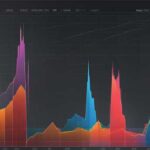Unlocking the Secrets of Forex Signals

In the fast-paced world of foreign exchange (Forex) trading, understanding and utilizing trading signals can be the key to unlocking significant opportunities. Forex signals, essentially, are trade suggestions indicating the market trends in real time. Mastering the art of interpreting these signals can significantly enhance a trader’s ability to make informed decisions. With the right approach, traders can sift through the noise, identifying lucrative trading opportunities that align with their investment strategies. The evolution of technology has made these signals more accessible and easier to understand, but the ability to use them effectively still requires a nuanced understanding of the market dynamics.
Decoding Market Trends with Precision

The core of successful Forex trading lies in accurately decoding market trends. This precision is achieved through a meticulous analysis of Forex signals, which provide insights into currency movements, enabling traders to anticipate market shifts. By analyzing historical data, current events, and market sentiment, traders can interpret these signals to forecast future currency performance. This decoding process demands a blend of technical analysis, understanding of global economic indicators, and an awareness of geopolitical events that can influence currency values. The precision in decoding these signals directly correlates with the trader’s success in navigating the Forex market.
The Science Behind Successful Signal Analysis

Successful signal analysis merges mathematical models, statistical analysis, and market psychology to predict currency movements. The science behind this involves various indicators, such as moving averages, relative strength index (RSI), and Fibonacci retracements, which help in identifying potential entry and exit points. Sophisticated algorithms and machine learning tools are now being employed to further refine signal accuracy, making it possible for traders to execute strategies with higher precision. This technological advancement has democratized access to advanced analysis tools, enabling both novice and experienced traders to interpret signals with greater efficacy.
Navigating Risks: Smart Signal Strategies

Forex trading, by its nature, involves a significant level of risk. However, smart signal strategies can mitigate these risks, safeguarding traders from potential losses. It involves setting stop-loss orders, understanding leverage, and diversifying trading positions. Traders should also be wary of relying solely on signals; instead, they should use these signals as tools within a broader, well-researched trading strategy. A disciplined approach to risk management, combined with a robust analysis of Forex signals, can empower traders to navigate the market’s volatility with confidence.
From Novice to Expert: Learning Curve Insights

The journey from a novice to an expert in Forex trading is marked by a steep learning curve. Understanding Forex signals is a critical part of this journey. Beginners often start with basic signal interpretations, gradually moving towards more complex analysis as they gain confidence. Educational resources, demo trading accounts, and mentorship programs can significantly expedite this learning process. Persistence, continuous learning, and adapting to market changes are essential traits that facilitate the transition from novice to expert. The mastery of trading signals is a continuous process, mirroring the evolving nature of the Forex market itself.
Future of Trading: Innovations in Signal Technology

The future of Forex trading signals lies in technological innovation. Machine learning and artificial intelligence (AI) are set to revolutionize the way traders interpret signals, providing unprecedented accuracy and speed. Real-time data analysis and predictive algorithms will offer traders insights into market trends before they become apparent to the broader market. Blockchain technology might also play a pivotal role, enhancing the security and transparency of signal-based trading. As these technologies mature, traders will have access to a suite of tools that not only simplifies signal analysis but also enhances the overall trading strategy.
Comparison Table: Traditional vs. Advanced Signal Analysis Techniques
| Feature | Traditional Analysis | Advanced Analysis |
|---|---|---|
| Tools Used | Moving Averages, RSI | Machine Learning, AI |
| Data Analysis | Historical Data | Real-time Data, Predictive |
| Speed | Manual Interpretation | Instant Analysis |
| Accuracy | Subject to Human Error | High Precision |
| Accessibility | Limited Tools Availability | Wide Range of Tools |
| Required Skill Level | Basic to Intermediate | Intermediate to Advanced |
The transformation from traditional to advanced signal analysis techniques underscores the evolving landscape of Forex trading. Embracing these innovations can significantly enhance a trader’s ability to navigate the market successfully.







Analyzing Forex signals can guide traders to make better decisions.
Smart signal strategies can reduce risks in Forex trading.
Traders need to learn how to decode Forex signals for better market predictions.
Even beginners can start learning Forex signals with the right tools and resources.
There is a big difference between traditional and advanced signal analysis techniques.
Forex signals help in trading by showing market trends in real time.
Using technology like machine learning makes signal analysis more accurate.
Future trading will benefit from AI and blockchain technologies.